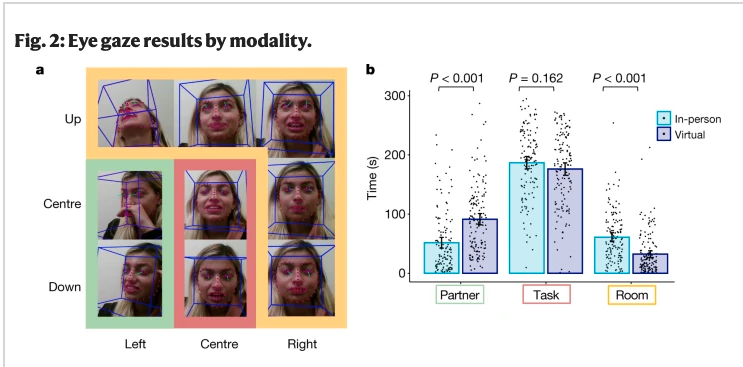Researchers in the journal Nature wanted to know if creative brainstorming was really more effective in person than remotely, as many creative agencies argue. Their study, published last April, offers a half-hearted conclusion: if the face-to-face mode allows us to generate a greater number of creative ideas, our ability to evaluate their quality would be superior… in virtual. Explanations.
Earlier this year, marketing researchers Melanie S. Bruck of Columbia University and Jonathan Levav of Stanford University recruited 602 people to participate in two separate creative brainstorming sessions to imagine uses for two products, a Frisbee and bubble wrap.
In teams of two, participants were given 5 minutes to come up with uses, then one minute to select their best ideas. Half of the teams collaborated remotely; the other half, in person, physically.
We showed that virtual interactions hindered idea generation,” say the researchers in their study abstract. We found that videoconference teams generated fewer creative ideas than in-person teams, due to visual focus, but we found no evidence that videoconference groups were less effective at selecting the best ideas.
The researchers note that even though the same information is exchanged, there is still an “inherent” physical difference in communicating via videoconferencing; a difference that is “psychologically significant.” Sharing a full common room rather than a tiny screen has an impact on the outcome of exchanges, they argue.
Less mind wandering
Our data suggest that this physical difference in shared spaces forces virtual communicators to limit their visual field by focusing primarily on the screen, and, as a result, filter out peripheral stimuli that are not visible or relevant to their partner.
Through facial analysis, the researchers actually found that people in virtual brainstorming were less likely to let their eyes wander around the room. And also, that this wandering was associated with greater idea generation.

Second, the researchers suggest that remote exchanges lose fluidity.
The number of words spoken is not significantly different, they say. However, the virtual groups spoke less often to each other and there were far fewer “retorts” or interruptions.
In the second stage, participants were asked to select the best ideas generated during the brainstorming session. This is where the results of the study are surprising. The marketing researchers note that the virtual teams selected higher quality ideas, but they don’t really offer an explanation for what they observe.
Remember that brainstorming has the disadvantage of opening the door to groupthink; in person, people sometimes tend to censor themselves, so as not to displease the person or people in front of them. Perhaps virtual exchanges give a little more distance, to judge a good idea? This is a hypothesis like any other.
Impact on telecommuting policies
In their study, the researchers point out that there are a multitude of reasons for choosing to collaborate in person or remotely, including economies of scale on office rental, access to talent in remote areas, and so on.
To get the best of both worlds, the researchers conclude, many companies have implemented – or plan to implement – a telecommuting policy that combines virtual and in-person interactions.”
Food for thought!




